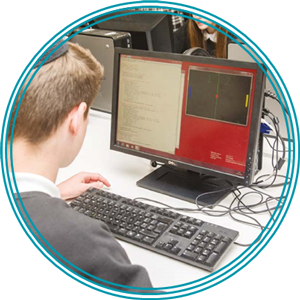Pupils will have been introduced to modeling through the ICT curriculum at KS1 & 2. See BBC Bitesize revision guide on modelling and simulation.
Cryptography is an excellent way to discuss codes and real life contexts. Khan academy offers this course exploring the role of cryptography through history.
Colossus was one of the first electronic digital computers anywhere. About nine were built in Britain during World War 2, to break German coded messages, History of Computing provides context and real world activities around this important hardware
KS3 Subject knowledge
The statements in the programme of study are brief and, in many cases, very dense. In this section, we unpack the concepts each statement refers to.
Computational Abstraction
Modelling is the process of developing a representation of a real-world system or situation that captures the aspects of the situation that are necessary for a particular purpose, while omitting the unimportant. The London Underground map, storyboards for animations and an animation showing the masses and velocities of planets orbiting the sun are all examples of models.
Different purposes need different models. For instance, the well-known (topological) London Underground map is great for route planning, but no use for estimating travel times.
Modelling real-world problems and physical systems can provide engaging projects for pupils. Work that you have done involving spreadsheets in the past may provide some examples of modelling real-world problems.![]()
Computational abstractions are models (often pieces of code) that include sufficient information to represent the computational aspects of a situation without describing absolutely everything.
You can have several layers of abstraction. For example, you might represent a car as a red rectangle in a model of a road network. You might have a more detailed abstraction in a simple game – adding wheels, a windscreen and the ability to move. An even more detailed abstraction would have fuel consumption, engine noise and suspension. Computational abstraction only includes the detail necessary for the model you are building.
By designing and using computational abstractions, pupils will be able to evaluate them, looking at how closely they match real life and how useful they are in making predictions.![]()


